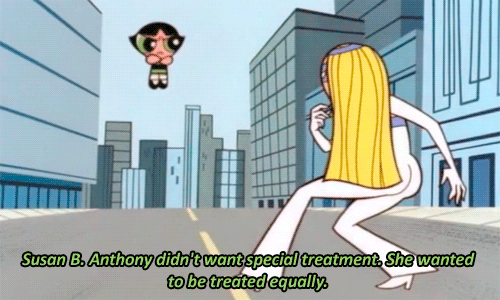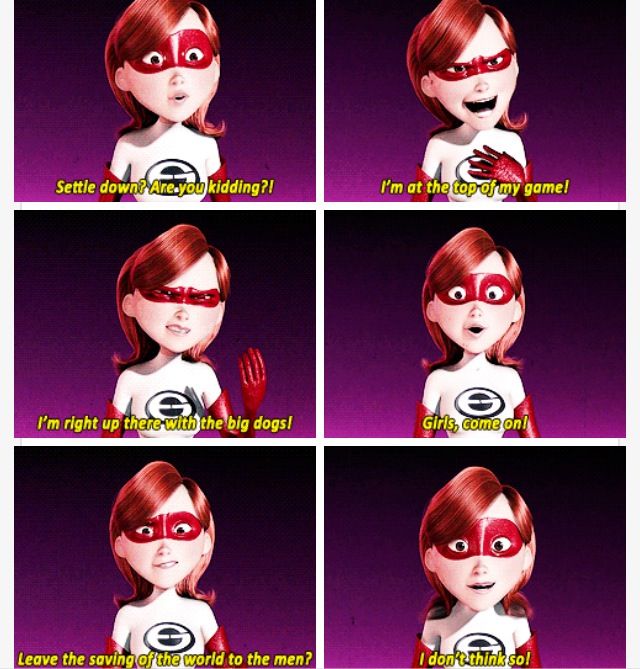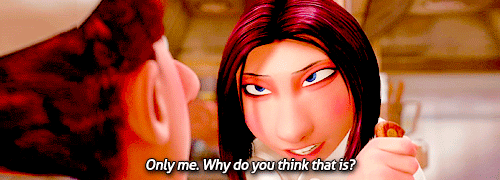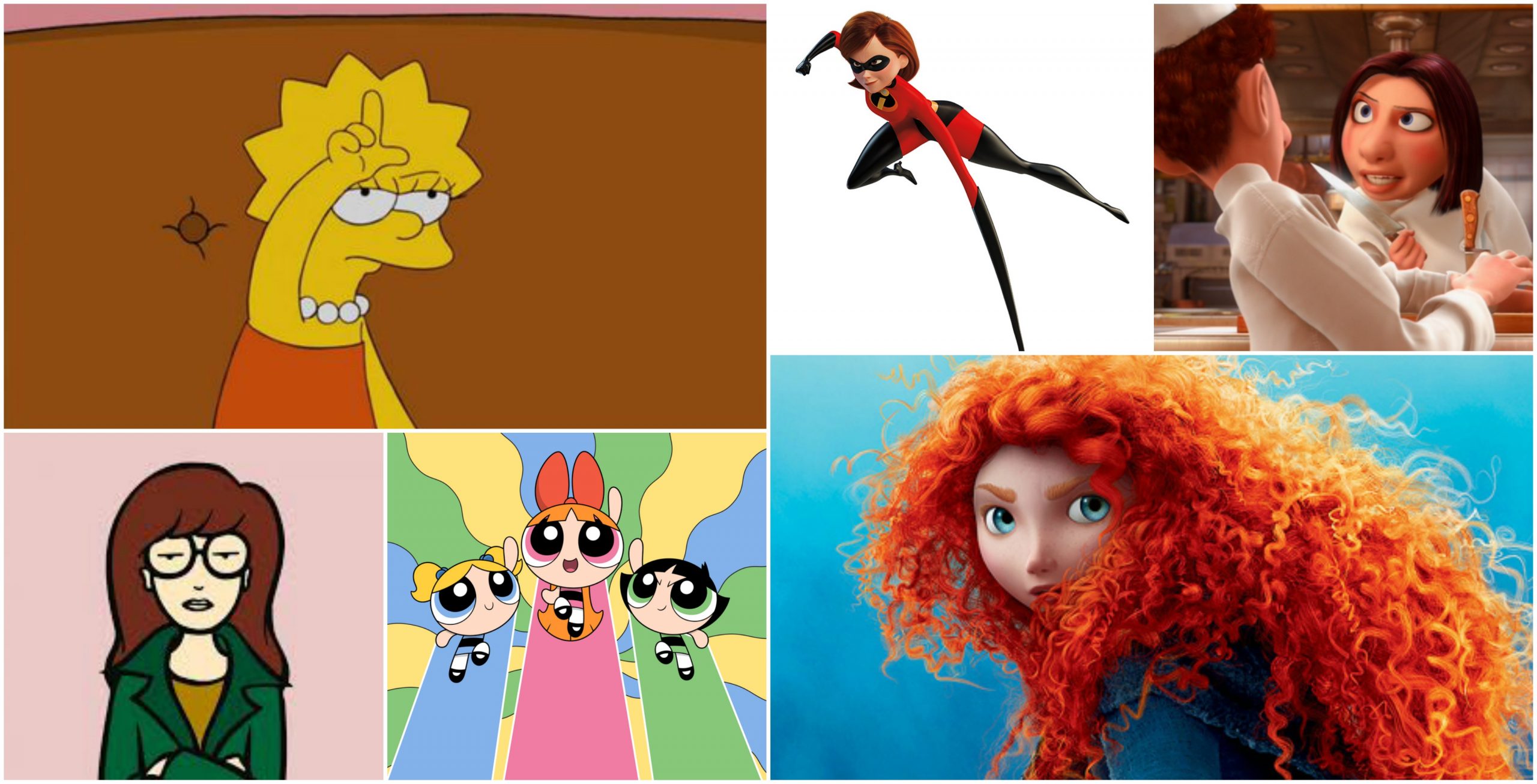Art is meant to enlighten the mind, give joy to the heart and expose reality that might be otherwise obscured. Animated media or animation has given us plenty, from rib tickling comedic masterpieces to gut wrenching sagas. The art form has progressed a lot. We don’t just have cartoons; we also have a separate category for animated feature films in the Oscars – and deservedly so.
In this wide variety, we often find ourselves dumbfounded with how inexplicably, effortlessly and accurately these animations and series portray real life social issues. It’s not just the visuals that astound; the well fleshed out characters with nuanced story lines are pretty amazing too. That being said, these films and series have introduced us to a bunch of strong feminist characters that not only entertain, but also inspire. Some of them are:
1. Lisa Simpson (The Simpsons)

The daughter of the Simpson’s clan, eight-year old Lisa is a young feminist in the world of animation. Fiercely independent and opinionated she identifies as a liberal and has taken several political stances throughout the show, advocating for environment conservation, women’s rights, etc. It can be said that Lisa represents what an inquisitive, still learning political feminist would be like.
One of her notable moments in the series was when she found out that her new talking doll only had misogynistic talking lines: ‘I wish they taught shopping in school!’ and ‘Lets bake some cookies for the boys!’ She called the doll sexist and proceeded to make her own version, Lisa Lionheart, which made the statement: ‘Trust in yourself and you can achieve anything!’
In another episode, Lisa played the saxophone, an instrument which is traditionally surrounded by male bias. In 1996, the New York Times reported of an increase in number of young girls interested in playing sax, all because of the little yellow haired cartoon girl.
In another episode, Lisa played the saxophone, an instrument which is traditionally surrounded by male bias. In 1996, the New York Times reported of an increase in number of young girls interested in playing sax, all because of the little yellow haired cartoon girl.
Also read: Kamala Khan A.K.A Ms. Marvel—A Step Towards An Inclusive Comic World?
2. Merida (Brave)

Princess Merida from the 2012 movie Brave, often deemed as an animation masterpiece is a modern girl bound by royal traditions. Merida is also Pixar’s first female lead. Her parents want her to have an arranged marriage and fit the role of a proper royal, but Merida has other plans. She wants to take charge of her life and decide her own course. A skilled archer with high military aptitude, she defies norms associated with a traditional ‘princess’. At the end of the movie, there was no male romantic interest/saviour character for her. She did it all by herself.
It’s interesting to note that Brenda Chapman, the female director of the movie (and Pixar’s first female director) who gave the idea initially, was removed from the project more than a year before release over creative differences. However, this one step back didn’t stop her – she went on to co-win the Academy Award for Best Animated Feature for the movie, again the first woman to do so.
3. Buttercup, Bubbles and Blossom (The Powerpuff Girls)

Buttercup, Bubbles and Blossom – three kindergarteners by day, superheroes by night. The epitome of ‘Don’t judge a book by its cover’, the adorable looking girls are actually impressively strong and clever superheroes protecting their city, Townsville. Looking cute and kicking butt – they do it all and do it well.
The epitome of ‘Don’t judge a book by its cover’, the adorable looking girls are actually impressively strong and clever superheroes protecting their city, Townsville. Looking cute and kicking butt – they do it all and do it well.
Going into the show’s creation, Amy Keating Rogers, the head writer, said that she didn’t want to focus on the typical ‘girly’ characteristics that might be expected. Moreover, the three have distinctly different, often messy personalities, showing how there is no one true ‘feminine’ way to be. Bubbles paid a lot of attention to her appearance, but Buttercup didn’t – both were equally acceptable. In fact, the show didn’t seem to follow any prescribed gender roles or rules at all. For instance, one episode had a villain named ‘HIM’ who wore a lot of rouge, wore conventionally what is deemed to be women’s attire, and was generally effeminate.
Also read: 6 Bollywood Characters You Didn’t Know Were Feminist
4. Elastigirl (The Incredibles Series)

The supermom from ‘The Incredibles’ wowed us all with her assertive, confident personality. In the first film, even though she was a stay at home mom, her character was not one that took a backseat. Her frustrations, the problems she face as a full time mother – which usually is portrayed as a background character – were all given due worth, and due screen time. She was given equal attention as both the important aspects of her life – a mom and a superhero, never undermining either.
“C’mon, Girls! Leave the saving of the world to the men? I don’t think so.” Iconic words from animation world which are testament to her sense of self and unwavering belief in her independent ability, Elastigirl has always been an inspiring figure, even more so in the sequel, The Incredibles 2.
5. Colette (Ratatouille)



Ratatouille’s Colette acknowledges the harsh reality within the very first few scenes, throwing light onto the extremely sexist nature of the culinary industry. Being the only female chef in the restaurant, she has to make no mistakes, maintain a tough demeanour and stand her ground to prove her worth in the male dominated arena – which she does. Her commitment to the kitchen and the larger vision of the restaurant is visible throughout the movie, making her a valuable asset.
She is portrayed as a no nonsense woman, impeccably skilled in her craft. She even takes on guiding Linguini, the new male recruit, with ease. Colette is a feminist chef making deliciously faultless food in a misogynistic world (here of animation), and her fiery bike which she uses as a mode of transport, is only the start of how she’s breaking stereotypes.
This is by no means an exhaustive or representative list. Suggestions to add to this list are welcome in the comments section.




